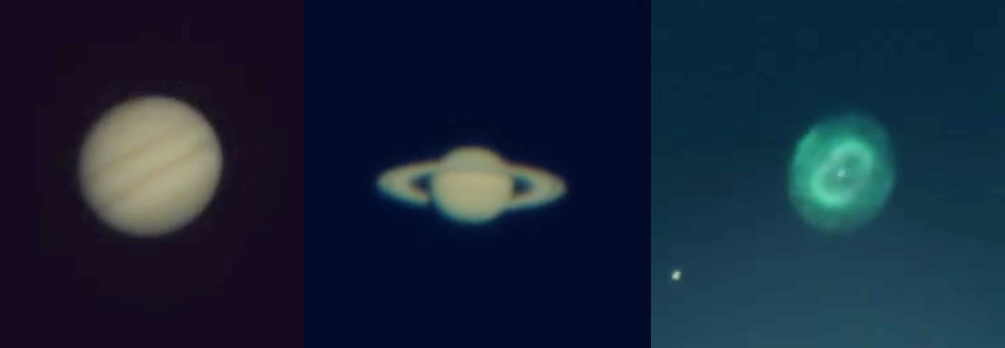
Egress of Mars from behind the moon as seen through the 60-inch telescope at Mount Wilson. December 7, 2022 17:30 PST.
On December 7th 2022, I cashed in any and all credits I had with the weather gods. It’s a superstitious thing to say, but there’s still a tiny irrational part of my brain that thinks that way. But it was worth it to be able to do a live stream of the occultation of Mars by the Moon.
A couple of months prior, we were getting toward the end of our observing season at Mount Wilson Observatory. Mars was just starting to peak out from the mountains to the East at the end of our sessions and I wondered when it was next at opposition, a time when Mars tends to be big and bright. Pulled out my phone, launched SkySafari and asked it to take me to the date of opposition. It took me to Wednesday, December 7th at 20:26:05 PDT, and centered the view on Mars. And there was the Moon, less than half a degree East of Mars. That’s when I first realized there was going to be an occultation (one celestial body passes in front of another).
Way back in December 2020, there was another celestial event that became an internet sensation: the conjunction of Jupiter and Saturn. We had decided to do a live stream from Mount Wilson for that event and it was super successful (still by far the most viewed video on Carnegie’s YouTube channel). So I thought: we should do that again. And we did, but it was a close call.
Between 2020 and 2021 there was, of course, the pandemic and the Observatory had been closed for an entire season. During that time, my wife Jenny and I did some more livestreams from the 60-inch telescope with the help of Tom Meneghini (Director of the observatory) and Richard Bell (volunteer). Those never went quite a viral as the conjunction event, but we did learn a lot about how to run a livestream and so we were a bit more practiced when December 7th came around. Except that the weather was not looking good. We’d been plagued by clouds and threat of rain for days. The Clear Sky Chart predicted clearing by 16:00, but the humidity was predicted to be high and we can’t open above 80%. The drive up to the mountain was in fog and we were thinking of how best to let folks know on the livestream that things didn’t work out.

View toward Mount Wilson Observatory from Red-Box Road, near Eaton Saddle, on December 7th at about 16:45.
By the time we got to the summit, the moon was just peaking through the clouds. When we got all our stuff unloaded, the East was clear, so we were good to go for the first part of the livestream at least. You see, at the time Mars goes behind the moon (18:30 PST), they are too low on the horizon for us to reach with the 60-inch telescope. Instead, we used Richard’s remotely-operable 5-inch reflecting telescope. It has a CMOS camera that we could show on the livestream with a nice wide field of view, showing the moon and Mars. But if we wanted to use the 60-inch telescope later when Mars comes back out from behind the Moon, the humidity would have to drop quite a bit. But at least we got half the occultation on our livestream.
And that’s just what happened. By the time our livestream started, the humidity had dropped to 80% (our limit) and it was decided we could at least open the dome, a process that takes several minutes and is quite noisy. But we left the mirror cover closed to avoid any possible condensation. When we were done with Richard’s refractor showing the ingress of Mars, Tom made the call to open the mirror cover and start observing. While that was getting set up, we showed folks the back of the telescope and explained how it worked to fill the time and let Tom and Richard get our first object into view: Jupiter.
The third and final happy surprise was that not only was the sky clear, but the seeing was fabulous. We’re always looking through the Earth’s atmosphere and some nights that air is just more turbulent than others, making the image wobble and blurry. But not tonight! We looked at Jupiter, Saturn, and the Blue Snowball (NGC 7662) and they all looked fantastic! Much better than our previous livestream of the Great Conjunction.

Jupiter, Saturn, and the Blue Snowball (NGC7662) as seen through the 60-inch telescope at Mount Wilson Observatory on the night of December 7th, 2022.
In all, I’m really happy with how it turned out. We had a great team working that night to bring it all together. Hopefully we’ll do it again soon for some other celestial event!
Credits:
- Jennifer Krestow: narration
- Chris Burns: narration
- Tom Meneghini: Telescope operator
- Richard Bell: CMOS camera operation
- Jeff Rich: livestream monitoring and narration.

